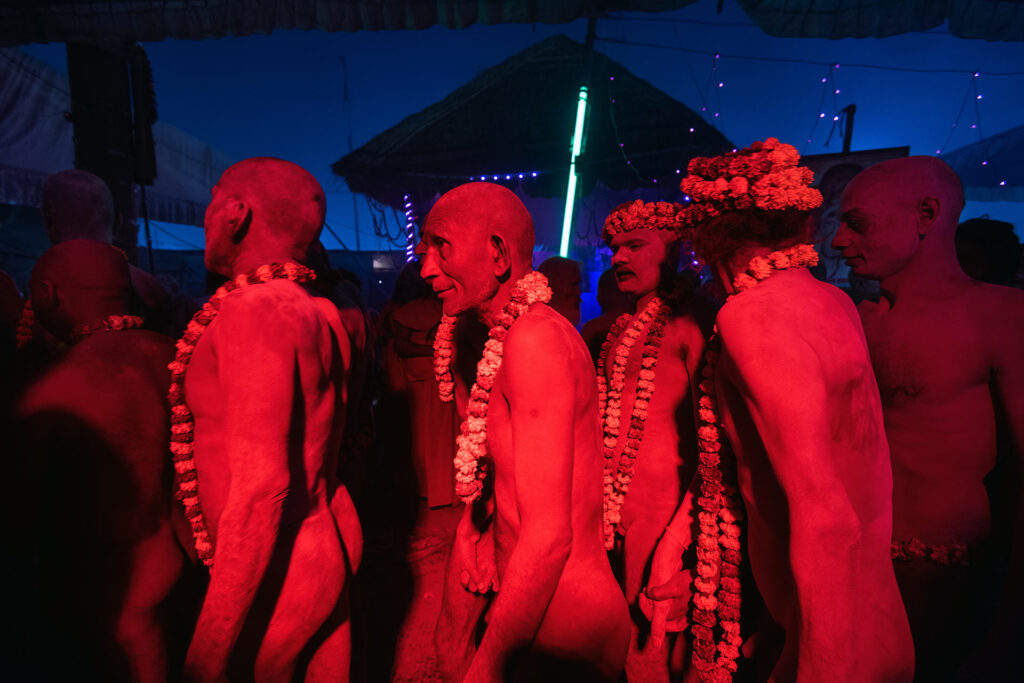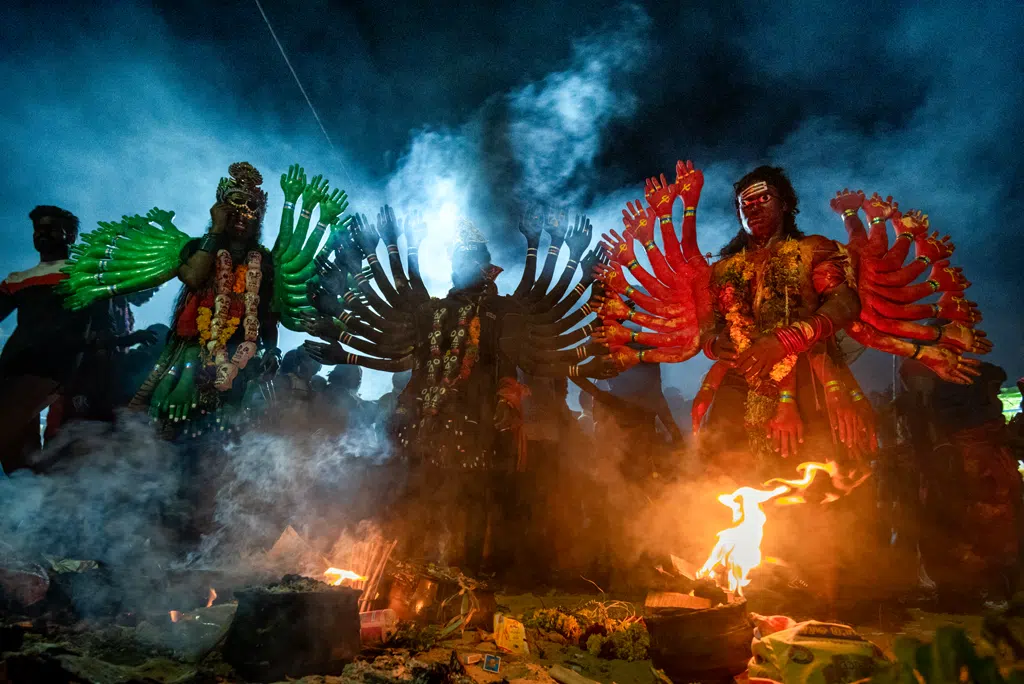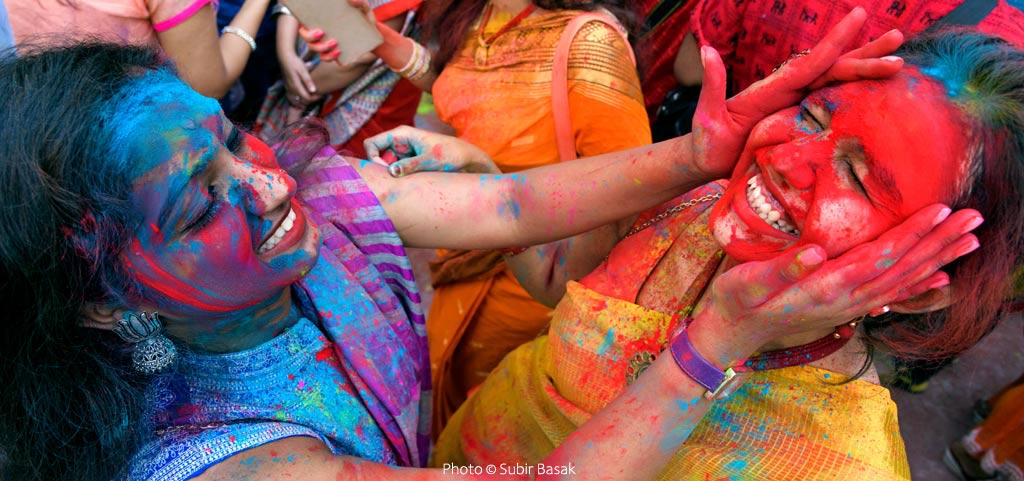
Holi Festival in India, Celebrating the Festival of Colors!
Holi is one of the most beloved festivals in India, celebrated with great fervor and enthusiasm across the country. This festival of colors and love is a time for people to come together and celebrate the arrival of spring, as well as the victory of good over evil.
Holi is a festival that brings people together, regardless of caste, creed, or religion. It is a time for forgiveness and new beginnings, a time to let go of grudges and embrace the joy of spring. It is also a time for families and friends to come together and celebrate the festival with food, drinks, and lots of colors.
Table of Contents
Holi festival 2026 date
The joyous festival of Holi will be celebrated on March 4th, Wednesday,2026.
Holi Festival Dates for 2026 to 2030
History of Holi festival
| Year | Date |
|---|---|
Holi 2026 | March 4th,Wednesday |
Holi 2027 | March 22rd,Monday |
Holi 2028 | March 11th,Saturday |
Holi 2029 | March 1st,Thursday |
Holi 2030 | March 20th,Wednesday |
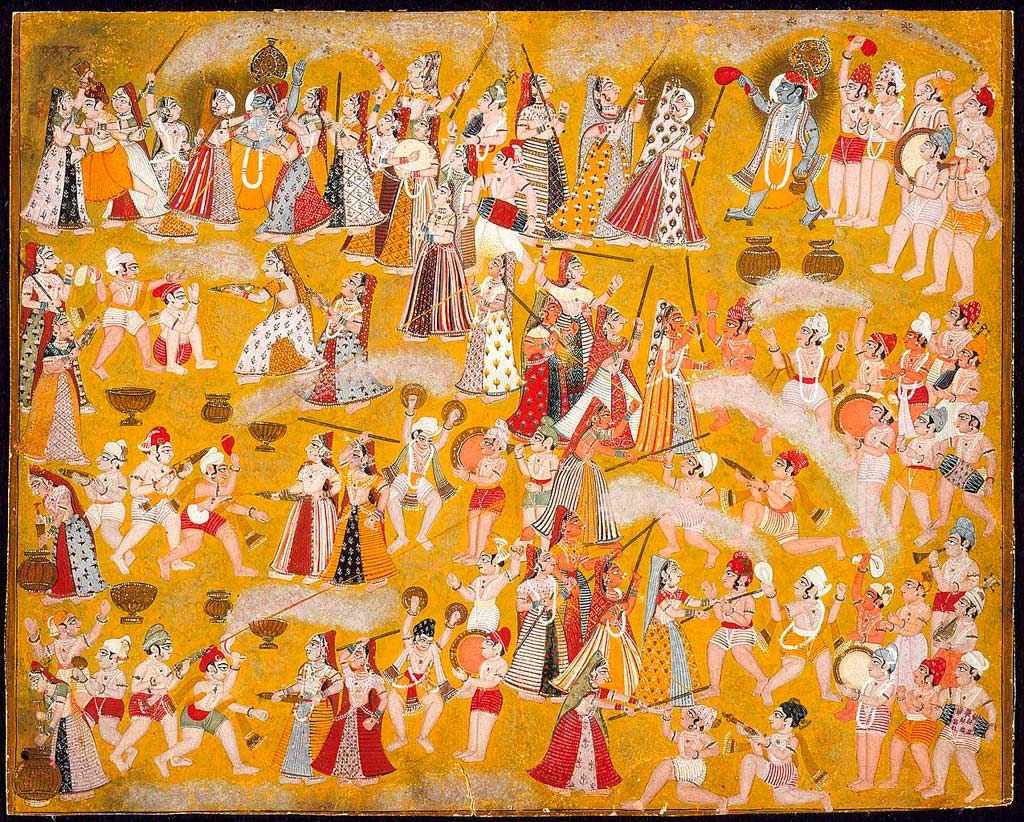
Holi festival has a deep mythological history that is steeped in Hindu mythology and tradition.
According to Hindu mythology, this festival commemorates the story of Lord Vishnu and his devotee Prahlad. Prahlad’s father, the demon king Hiranyakashyap, wanted his son to worship him instead of Lord Vishnu. Prahlad, however, refused and continued to worship Lord Vishnu. Hiranyakashyap then ordered his sister, Holika, to sit in a fire with Prahlad in her lap. Holika had a boon that fire would not harm her, but Prahlad was saved by Lord Vishnu, while Holika was burned to death. This event is celebrated as Holika Dahan, the night before the main festival of Holi.
Another popular legend associated with this festival is the story of Lord Krishna and Radha. Lord Krishna, known for his love of colors, is said to have smeared color on Radha and other gopis (female cowherd companions). This is believed to be the origin of the practice of smearing color on friends and loved ones during the Holi festival.
This festival is also associated with the story of Ogress Pootana who tried to kill baby lord krishna by breast-feeding him poison. Lord Krishna killed her on this day and saved the life of thousands of children who were being killed by her. This event also celebrated on the day of Holika Dahan
The Holi festival has a rich and deep mythological history that is steeped in Hindu mythology and tradition. The festival commemorates the victory of good over evil and the celebration of love and colors. It is a time for forgiveness and new beginnings, and a time to embrace the joy of spring.
Discovering the Roots of Holi festival
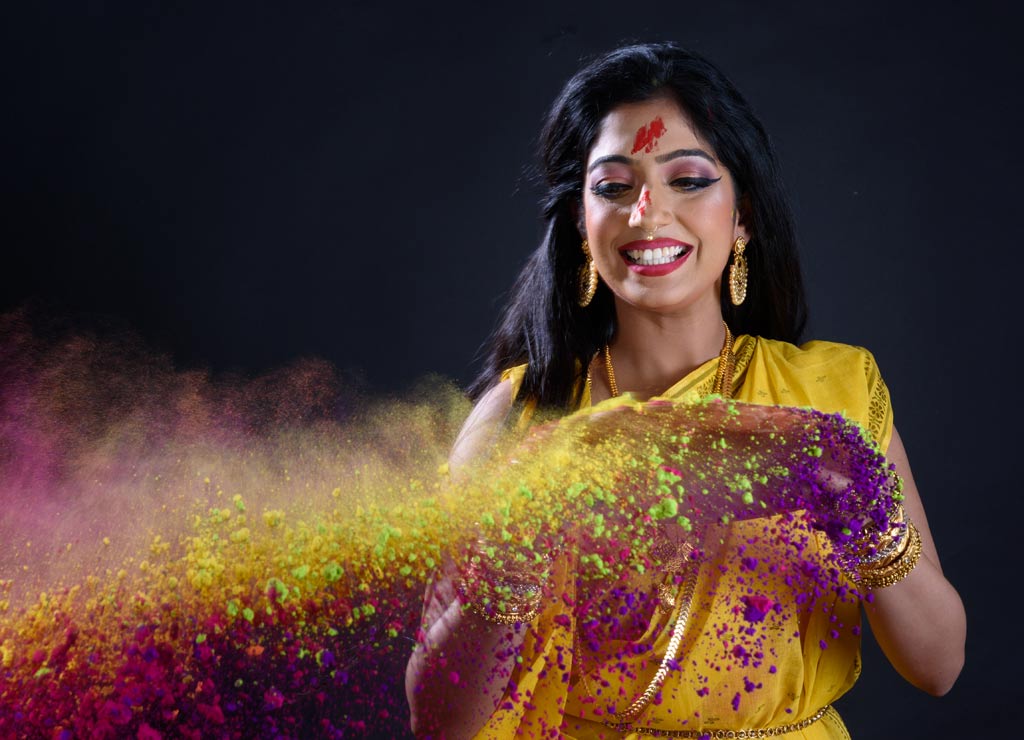
Holi is a Hindu festival that is celebrated with great enthusiasm and joy across India. It is also known as the “Festival of Colors” or the “Festival of Love.” The celebration marks the arrival of spring and the victory of good over evil.
The festival is celebrated on the full moon day in the Hindu month of Phalguna, usually in February or March. The celebrations typically begin with a bonfire, known as Holika Dahan, on the night before the main festival. The bonfire symbolizes the burning of evil and is an important ritual that is observed by many.
The next day, known as Rangwali Holi, Phagwah, Dol Jatra or simply Holi, people take to the streets, smearing each other with colored powders and water, and wishing each other a happy Holi. The festival is also marked by the exchange of sweets, singing and dancing, and the playing of music.
It is a festival that brings people together, regardless of caste, creed, or religion. It is a time for forgiveness and new beginnings, a time to let go of grudges and embrace the joy of spring. It is also a time for families and friends to come together and celebrate the festival with food, drinks, and lots of colors.
The festival is also an important part of Hindu mythology, it is said that Lord Vishnu had saved his devotee Prahlad from his demon father, Holika by burning her. This event is celebrated as Holika Dahan.
In conclusion, Holi is one of the most beloved and vibrant festivals in India. It is a time for celebration, love, and forgiveness, and a time to embrace the arrival of spring. The festival of colors and love is a celebration of unity and joy, and is an important part of Hindu culture and tradition.
Different Names of Holi Festival around India

Holi is known by different names in different regions of India, reflecting the diversity and richness of Indian culture and tradition.
In the northern states of India, such as Uttar Pradesh, Delhi, and Punjab, Holi is known as Phagwah or Rangwali Holi. In the western states of Maharashtra and Gujarat, the festival is known as Fagu Purnima or Rangpanchami. In the eastern states of West Bengal and Odisha, the festival is known as Dol Jatra or Dol Purnima.
In the southern states of Tamil Nadu and Kerala, Holi is not as widely celebrated as in other parts of India. However, in the state of Andhra Pradesh, the festival is known as Medin Pindlu or Holagulla. Similarly, in the state of Karnataka it is celebrated as KamaDahana, where it is celebrated by burning an effigy of Kamadeva, the god of love, on the day before Holi.
In the state of Maharashtra, the Holi festival is celebrated with a unique tradition, known as the Kondaji Holi, where people smear each other with mud.
In conclusion, The Holi festival is celebrated with different names across India, reflecting the rich cultural diversity of the country. Each region has its own unique customs and traditions that make the celebration of the festival truly special and unique.
Holi related festivals in India
Holi is one of the most vibrant and joyous festivals celebrated in India, and it is marked by a variety of regional variations and related festivals. One such festival is the Gangaur Festival, celebrated primarily in Rajasthan and parts of Gujarat. The festival is dedicated to the goddess Gauri, who represents fertility and marital happiness.
Another related festival is Hola Mohalla, which is celebrated by the Sikh community in the state of Punjab. The festival is a showcase of martial arts, mock battles, and other displays of strength and skill
Dol Jatra is also celebrated as a Holi-related festival, particularly in the state of West Bengal. It is also known as Dol Purnima and Dol Yatra, and is celebrated by the worship of Lord Krishna and Radha.
Bosonto Utsav is a Bengali festival that is closely associated with Holi. The festival is celebrated to welcome the spring season and is celebrated with music, dance, and lots of colors.
• Gangaur Festival •
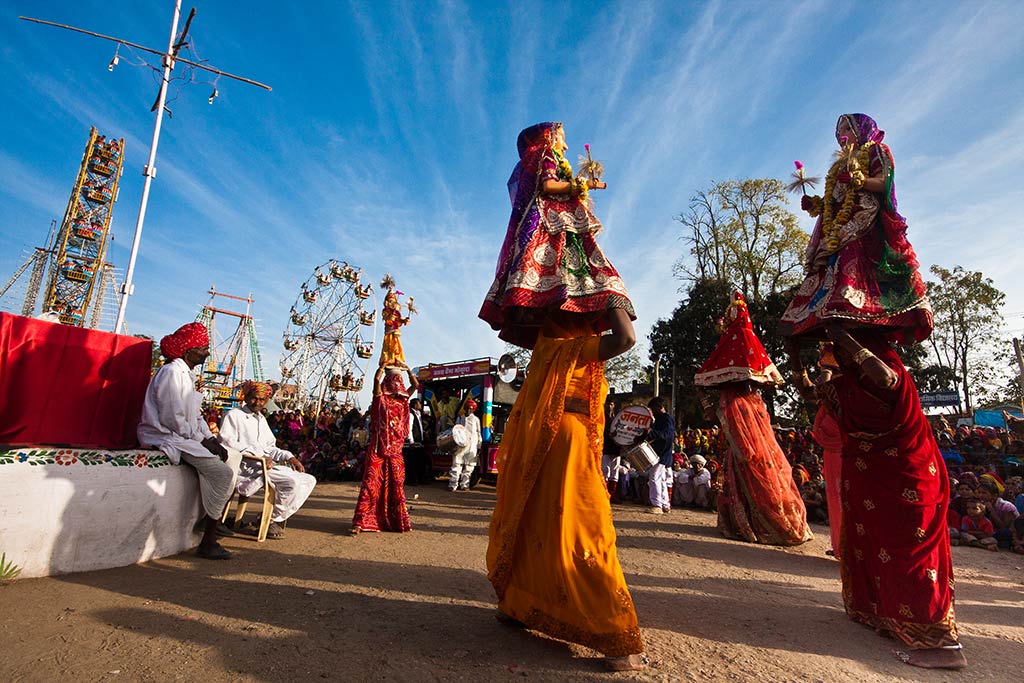
One such related festival is Gangaur, which is celebrated in Rajasthan, Gujarat, and some parts of Madhya Pradesh. Gangaur is celebrated in the honor of Gauri, a manifestation of goddess Parvati, and is celebrated by women, who pray for the well-being and long life of their husbands or for a good husband. This festival is celebrated during the same time as Holi and is marked by colorful processions, singing, and dancing.
The festival is marked by colorful processions, singing, and dancing. Women dressed in traditional attire, carrying images of Gauri, walk in a procession through the streets, accompanied by music and song. The procession is led by a group of women who carry a palanquin with the image of Gauri on it.
The festival lasts for 18 days, and it starts on the first day of the Chaitra month, according to the Hindu calendar. On the last day, the images of Gauri are taken to a nearby water body, where they are immersed in a ceremony known as Gauria Visarjan.
Gangaur is an important festival for the people of Rajasthan, Gujarat, and Madhya Pradesh, and it is celebrated with great devotion and enthusiasm. It is a celebration of womanhood, fertility, and marital bliss and it is a way of wishing for the well-being of family and society. The festival is not only a celebration of the divine feminine but also a celebration of the arrival of spring and the beauty of nature.
• Hola Mohalla •
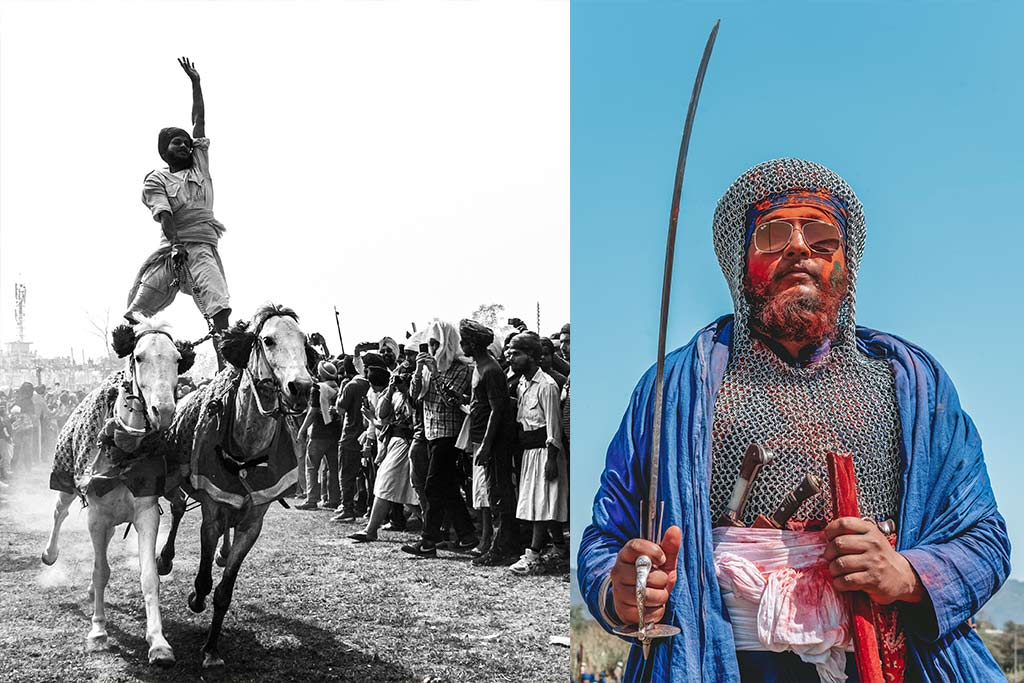
Hola Mohalla is a unique and vibrant festival celebrated in the Indian state of Punjab, and it is closely related to the festival of Holi. The festival is celebrated on the first day of the lunar month of Chet, which usually falls in March. It is a time for people to come together and spread joy and love, just like the festival of Holi.
The festival of Hola Mohalla is a celebration of the Sikh community’s martial heritage and is marked by display of traditional martial arts, mock battles and display of weapons. The festival also features a large fair, where people come to participate in various activities such as poetry recitals, music, and religious discourse.
One of the main highlights of the festival is the Nihang Singh’s exhibition of Gatka, a traditional Sikh martial art form. The festival also features a grand parade of the Sikh community’s traditional warrior, the Nihang Singhs, who are dressed in their traditional blue attire and carry weapons such as swords, spears and shields.
• Dol Jatra •
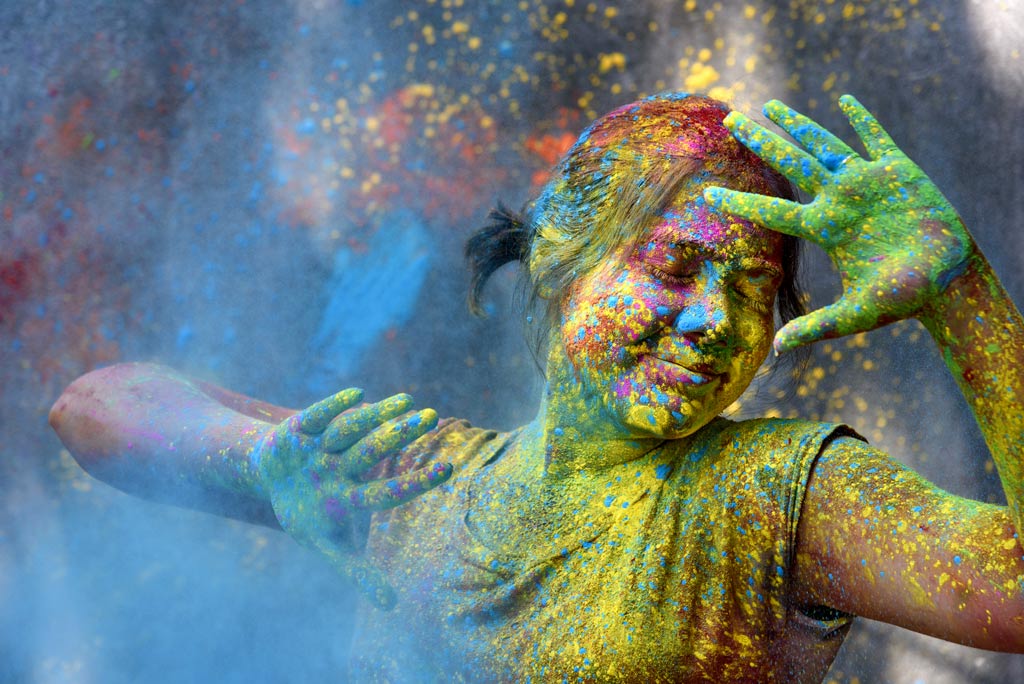
Another related festival is Dolyatra or Dol Jatra, which is celebrated in the eastern states of West Bengal and Odisha. This festival is celebrated on the full moon day in the month of Phalguna and is marked by the swinging on large swings, decorated with flowers and colors, as a symbol of the arrival of spring.
Dol Yatra is a unique and vibrant festival celebrated in India, closely related to the festival of Holi. The festival is celebrated in a grand and colorful manner, where beautifully decorated idols of Lord Krishna and Radha are taken through the streets in a grand procession. The parade is led by a band of musicians and is followed by people dressed in traditional attire, holding flowers and playing with colors.
One of the main highlights of the Dol Yatra is the swing festival, where the idols of Lord Krishna and Radha are placed on a beautifully decorated palanquin and taken through the streets of the city. The devotees take turns to swing the palanquin while women dance around it and sing devotional songs. The streets are filled with the sound of music and laughter, as people playfully spray colored water and powder, ‘abeer‘ on each other.
The Dol Yatra is also marked by the display of traditional art forms such as songs, dances, and music performances. The festival is a celebration of love, joy, and the arrival of spring. It is a perfect opportunity to witness the rich cultural heritage of India and to be a part of the vibrant and colorful celebration.
• Bosonto Utsav •
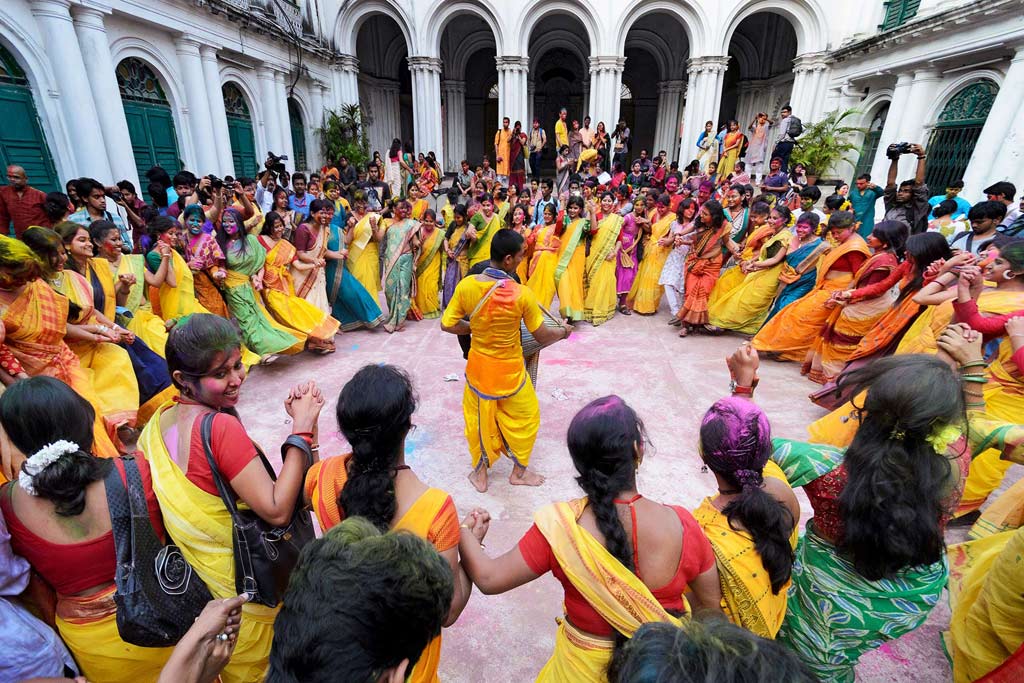
Basant Utsav, also known as “Spring Festival” is one of the most celebrated festivals in West Bengal(specially in Kolkata and Santiniketan), India. It’s a unique celebration that was reintroduced by poet and Nobel laureate Rabindranath Tagore at Shantiniketan, the University he founded. The festival marks the arrival of spring and is celebrated with great zeal and enthusiasm.
During the festival, the students of Shantiniketan dress in saffron-colored clothes and wear garlands of fragrant flowers. They sing and dance to the accompaniment of musical instruments, creating an enchanting view for onlookers and a memory to cherish for years. The festival is celebrated in a dignified manner and it’s a perfect opportunity to immerse yourself in the culture and traditions of the region.
The celebration of Basant Utsav is also marked by the display of traditional art forms such as songs, dances, and music performances. The festival is a celebration of hope, joy and the arrival of spring. It is a perfect opportunity to witness the rich cultural heritage of West Bengal and to be a part of the vibrant and colorful celebration.
• Latmaar Holi •
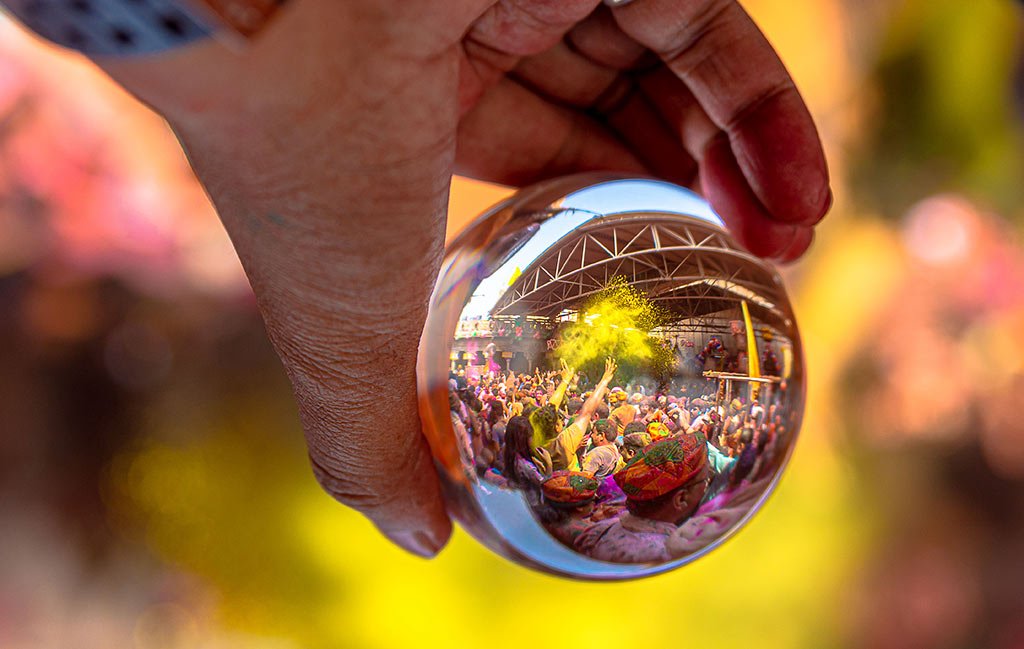
Latmaar Holi is a unique and colorful festival celebrated in the Indian state of Uttar Pradesh. Unlike the traditional Holi, Latmaar Holi is celebrated by the people of Barsana and Nandgaon villages, where men from Nandgaon visit the women of Barsana and playfully hit them with sticks. The women, in turn, defend themselves with sticks of their own. This playful battle between the men and women is known as “Lathmaar Holi.”
This festival is a celebration of the divine love between Lord Krishna and Radha and marks the beginning of spring. People gather in large numbers to participate in the colorful celebrations, which include singing, dancing, and the exchange of sweets.
Not only is Latmaar Holi a unique cultural experience, but it is also a great opportunity to witness the rich tradition and customs of India. The festival is a perfect blend of religion and fun, making it a must-see for anyone visiting India during the Holi season. It’s a perfect way to Celebrate Holi in a unique way by immersing yourself in the vibrant culture of India. It’s an event that is sure to leave a lasting impression on anyone who experiences it.
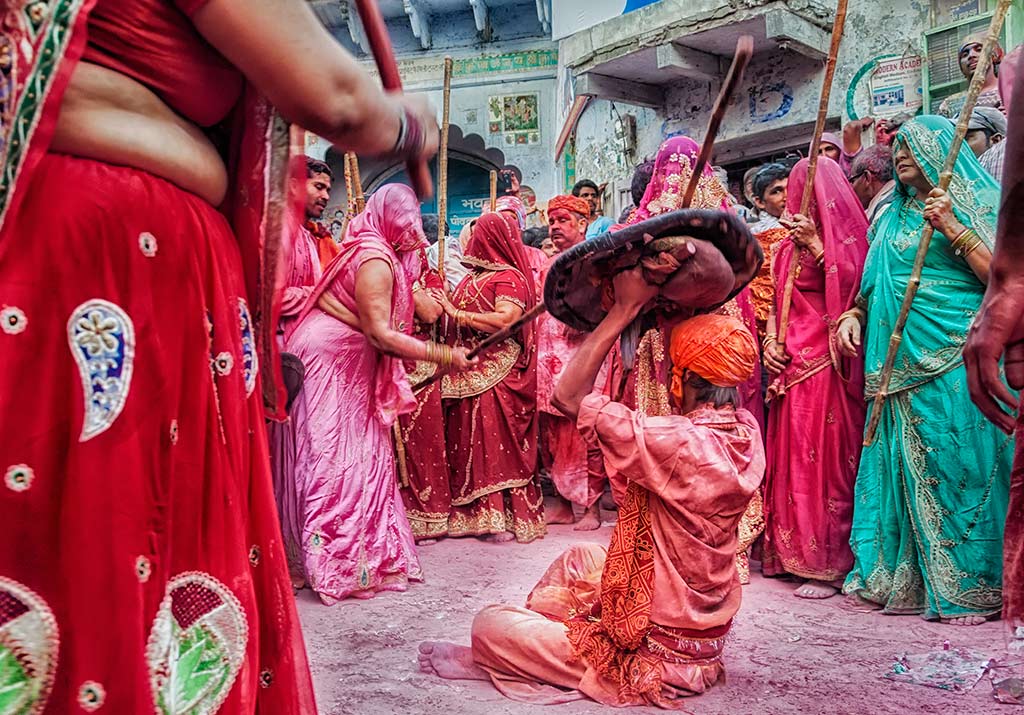
Conclution
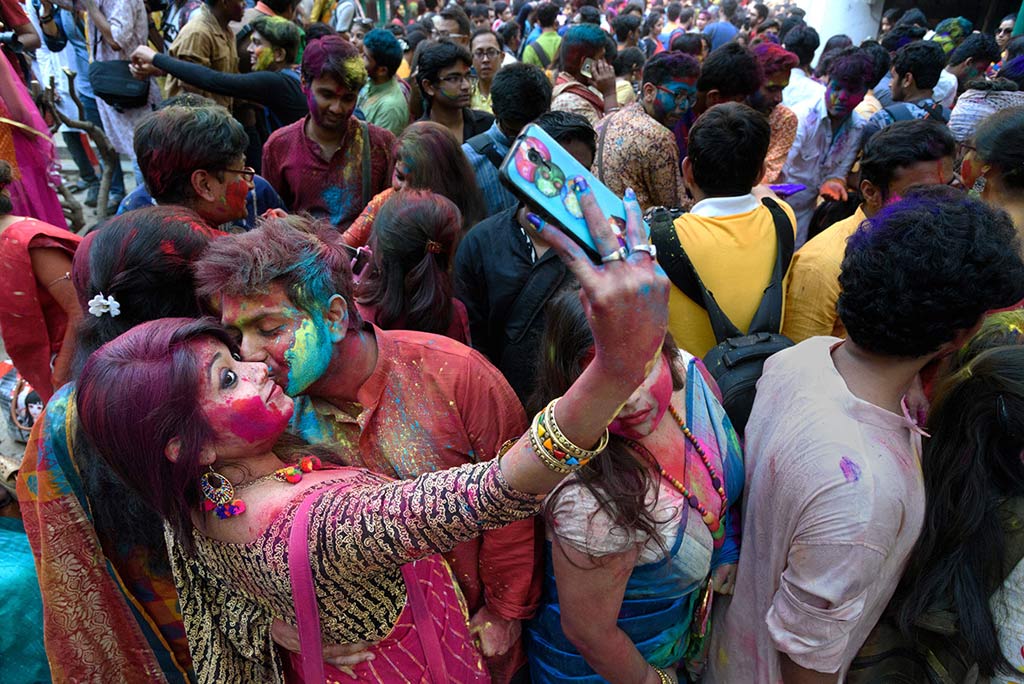
Celebrating the Holi Festival in India is a unique and colorful experience! This traditional Hindu holiday is celebrated with joyous music, vibrant colors, and delicious food. The Holi Festival symbolizes the victory of good over evil, while also celebrating the start of spring. Join us as we explore the vibrant culture, traditions, and history of this incredible festival. From throwing colorful powder to traditional folk songs and dances – experience the joy of Holi in India!
FAQ
1.Why do we celebrate Holi?
- Holi, the festival of colors, is celebrated for many reasons. One of the main reasons is to mark the arrival of spring and the end of winter. It is a time for people to come together and spread joy and love. Another significant reason for celebrating Holi is the religious significance attached to it. According to Hindu mythology, Holi commemorates the victory of good over evil, specifically the burning of the demoness Holika and the protection of Prahlad. Additionally, it is also celebrated as the birthday of Lord Vishnu’s devotee Prahlad and Lord Krishna’s childhood pranks. It’s a time for forgiveness, coming together with friends and family and spreading love and happiness.
2.What Holi means?
- Holi, the festival of colors, is not just a celebration of spring, but also a symbolic representation of triumph of good over evil, love over hatred and forgiveness over grudges. Holi is a time to come together with friends and family, and forget past differences and start anew. It’s a day to spread joy, love and happiness, and to embrace the spirit of unity and togetherness. It is a celebration of life and the importance of relationships, it’s a time to renew bonds and make new memories.
3.Which country invented Holi?
- Holi, the festival of colors, is an ancient Hindu festival that has been celebrated for centuries in India and Nepal. The origins of Holi can be traced back to ancient Hindu texts and mythology. It is believed that the festival was first celebrated in the Indian subcontinent and it has since spread to other parts of the world where the Hindu community resides. Today, Holi is celebrated not only in India and Nepal, but also in other countries with a significant Hindu population such as Bangladesh, Pakistan, Sri Lanka and many more.
4.What is the main purpose of Holi?
- The main purpose of Holi is to celebrate the arrival of spring, the victory of good over evil and to foster love, unity and forgiveness among people. It’s a time to forget past differences and start anew, to spread joy and happiness and to strengthen relationships. Holi is a festival that promotes the spirit of togetherness, compassion and harmony.
5.What is Holi and how is it celebrated?
- Holi is a vibrant festival of colors, celebrated by smearing colored powder and water on each other, singing and dancing. It marks the arrival of spring and the victory of good over evil. Holi is celebrated by lighting bonfires, playing with colored powders and water, feasting on traditional sweets and visiting friends and family. It’s a time to let go of grudges and forgive, to make new beginnings and to strengthen relationships.
6.Why Holi is celebrated with colors?
- Holi is celebrated with colors as it symbolizes the arrival of spring, the victory of good over evil, and the spreading of joy and love. The bright colors represent the energy and positivity of the season, and spreading them symbolizes spreading cheer and happiness. The use of colors also has a spiritual significance, representing the breaking of negative energies and bringing in positivity. It’s a way to embrace the beauty of nature, to celebrate life and to mark the arrival of spring.

